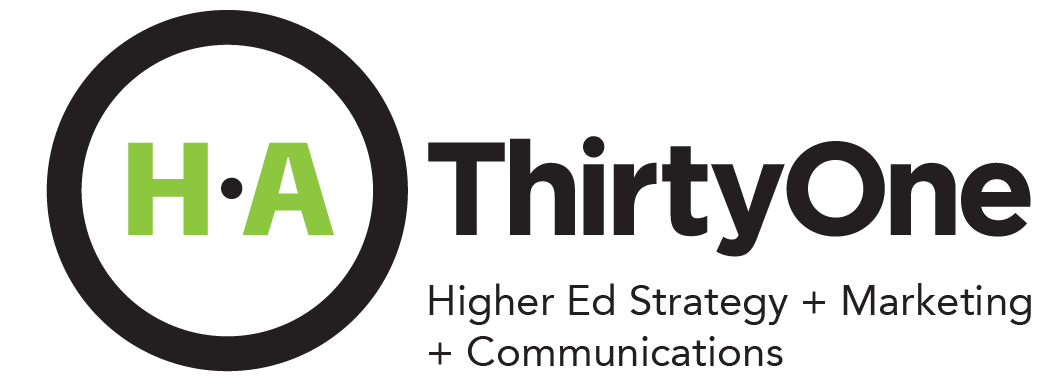I remember sitting in front of the blank Excel spreadsheet, provided by our CFO, with emotions ranging from a soaring sense of anything is possible to something that could be more closely described as that poignant scene from Oliver Twist, “please sir, can I have some more?”
Budgeting in higher ed can feel like an exercise in futility, a Sisyphean act of dreaming big, thinking smart, crunching the numbers, just to have that rock of the same old budget (or worse, one that is smaller) rolled back into your lap. There were years when I wanted to simply hit fast-forward and skip the whole case-building and rationale establishment and just take a number and do whatever great things I could do by bleeding that rock. It was tempting, but I’m glad I never did (or was allowed) to take that approach.
Zero-based budgeting is not only smart to ensure the dollars really are going where they need to go, it’s an approach that forces we budget managers to wipe the slate clean and do things differently. When you consider how much you spent on Student Search last year, how it worked and what you got for it, is that really where you want to spend such a significant amount of your budget? Is there a way to get better results for less? Were you working harder or smarter? Is there a way to put your budget dollars in alignment with the latter? You put significant efforts toward encouraging your staff to promote your institution’s distinctive qualities. Is that effort diminished or diluted by using a cookie-cutter approach to Student Search and enrollment communications? What would happen if you took a different approach this year, with even a single slice of your budget, to test the waters with a new idea or strategy? How long has it been since you conducted a comparison with your current partners?
When I work with a school, I very rarely encourage them to change everything at once. Changing everything in one swoop generally spells disaster and pain for everyone. It’s also too difficult to measure what changes can be thanked (or blamed) for results. My best advice to those tasked with managing the purse strings in enrollment, admissions, marketing, and communications is to ask some key questions.
What worked last year?
Did you have success with a particular campaign, effort, or approach? If so, follow that lead, expand on it slightly, let it grow. Take that singular success and develop it further by putting some additional resources toward that approach. Don’t do the exact same thing, expand on it a bit and see how much higher that balloon may float.
What didn’t work last year?
Something bombed, panned, or fell flat. Do you know why? Was it poor execution? Was the rationale for implementing the new approach flawed in some way? Did the landscape change? Before you abandon something that you invested in, make sure you understand clearly why it didn’t soar. If you understand the actualities of the results, you may be able to recoup the investment you made last year by executing smarter this year and sustain the same dollar amount spent. It’s almost always more expensive to start from scratch.
What’s on your wish list?
No matter how small your budget, you’ve got to allocate some dollars to trying completely new things. It’s not about “go big or go home.” It’s about always expanding and diversifying your approach. Trying new things keeps your efforts current and will inevitably breed new ideas. Does one of your staff members have an idea she’s been dying to try? Give it a little traction, give her some ownership of it, and see what happens. Whether it is a new service, utility, conference, or strategy, think of this area as the test bed for informing some of next year’s larger budget allocations.
Ask more questions.
Ask your external partners what ideas they have for furthering the enrollment and marketing goals of the institution. You don’t need a formal proposal or exact budget, but some strategic planning and ballparks could help catalyze a new idea or approach for the year ahead. Our partner schools have this as an ongoing dialogue because they know asking questions and getting some new ideas helps both organizations plan for the future and support one another more fully. If you fear a partner will take advantage of this situation, trying to spend or secure more dollars than necessary, take that as a warning. The relationship isn’t as it should be. If you don’t have trust that your partner is going to give you good counsel and strategic advice that advances the institution, it may be time to find another source.
• • •
Karyn Adams is vice president and creative director for H·A ThirtyOne, working closely with the enrollment leadership and strategic communicators on campus. Have some ideas you’d like to test? Contact Karyn at karyn.adams@hathirtyone.com | 865.207.6944
Categories
- Admissions
- Budgeting
- Enrollment Strategy
- Leadership
- Marketing
- Metrics
- Planning
- Professional Development
- Student Find Campaigns
- Student Search Campaigns
- Uncategorized
